In July 1970, the almost-complete skeleton of a Stone Age elk was found during building work on a new house on Blackpool Old Road. The skeleton is around 13,500 years old and is particularly important, as barbs were found embedded in its bones – the earliest evidence of hunters this far north. The site of the famous discovery had been the edge of a lake, where the elk is thought to have drowned. The ‘Poulton Elk’ is now on display in the Harris Museum, in nearby Preston.
A photograph, painting and text about The Poulton Elk.
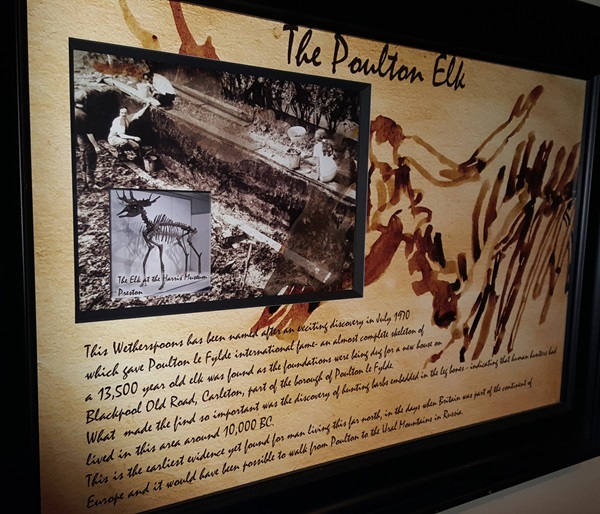
The text reads: This Wetherspoon pub has been named after an exciting discovery in July 1970 which gave Poulton Le Fylde international fame – an almost complete skeleton of a 13,500 year old elk was found as the foundations were being dug for a new house on Blackpool Old Road, part of the borough of Poulton Le Fylde.
What made the find so important was the discovery of hunting barbs embedded in the leg bones – indicating that human hunters had lived in this area around 10,000BC.
This is the earliest evidence yet found for man living this far north, in the days when Britain was part of the continent of Europe and it would have been possible to walk from Poulton to the Ural Mountains in Russia.
Artwork and text about the history of this site.
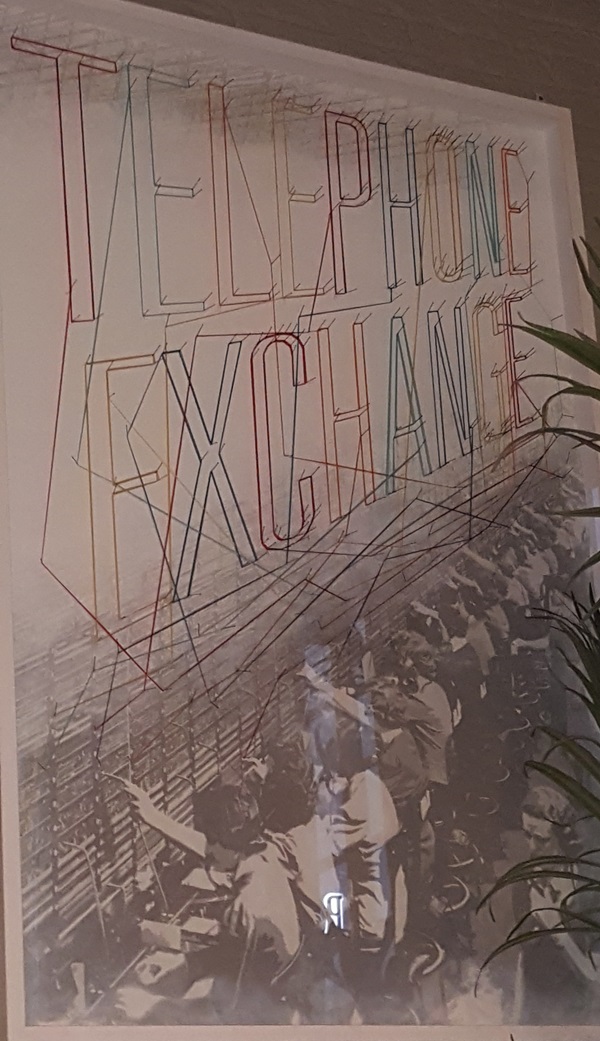
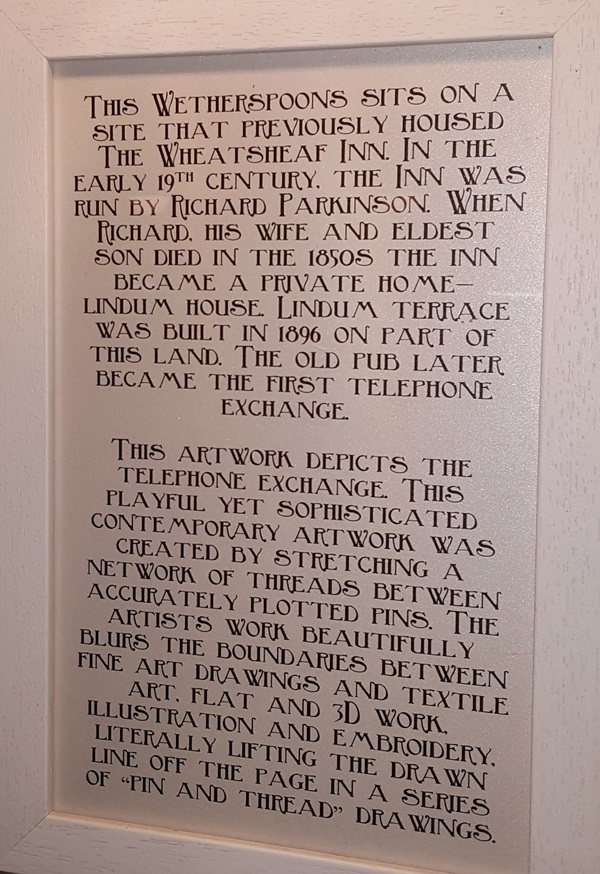
The text reads: This Wetherspoon pub sits on a site that previously housed The Wheatsheaf Inn in the early 19th century. The inn was run by Richard Parkinson. When Richard, his wife and eldest son died in the 1850s the inn became a private home – Lindum House. Lindum Terrace was built in 1896 on part of this land. The old pub later became the first telephone exchange.
This artwork depicts the telephone exchange. This playful yet sophisticated contemporary artwork was created by stretching a network of threads between accurately plotted pins. The artist’s work beautifully blurs the boundaries between fine art drawings and textile art, flat and 3D work, illustration and embroidery, literally lifting off the page in a series of pin and thread drawings.
A photograph and text about the history of Poulton.
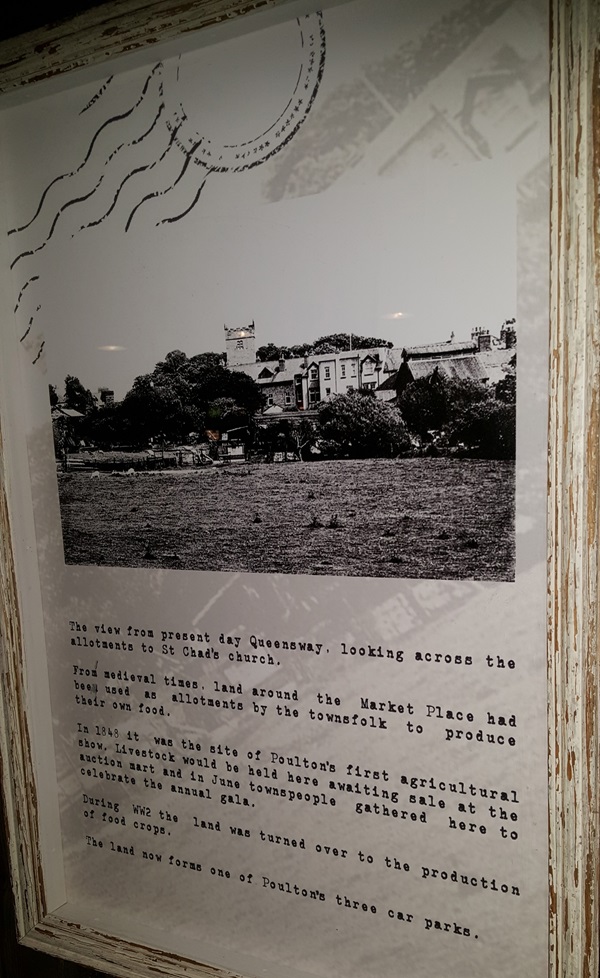
The text reads: The view from present day Queensway, looking across the allotments to St Chad’s Church.
From medieval times, land around the Market Place had been used as allotments by the townsfolk to produce their own food.
In 1848 it was the site of Poulton’s first agricultural show. Livestock would be held here awaiting sale at the auction mart and in June townspeople gathered here to celebrate the annual gala.
During WW2 the land was turned over to the production of food crops.
The land now forms one of Poulton’s three car parks.
Photographs and text about people, places and events in Poulton.
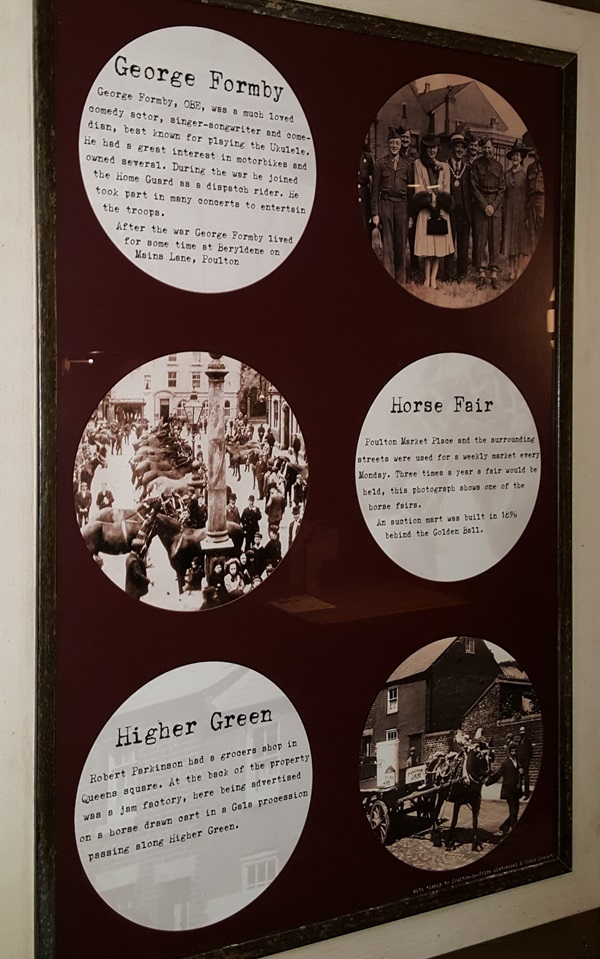
The text reads: George Formby
George Formby, OBE, was a much loved comedy actor, singer-songwriter and comedian, best known for playing the ukulele. He had a great interest in motorbikes and owned several. During the war he joined the Home Guard as a dispatch rider. He took part in many concerts to entertain the troops.
After the war George Formby lived for some time at Beryldene on Mains Lane, Poulton.
Horse Fair
Poulton Market and the surrounding streets were used for a weekly market every Monday. Three times a year a fair would be held, this photograph shows one of the horse fairs.
An auction mart was built in the 1896 behind the Golden Bell.
Higher Bell
Robert Parkinson had a grocers shop in Queens Square. At the back of the property was a jam factory, here being advertised on a horse drawn cart in a gala procession passing along Higher Green.
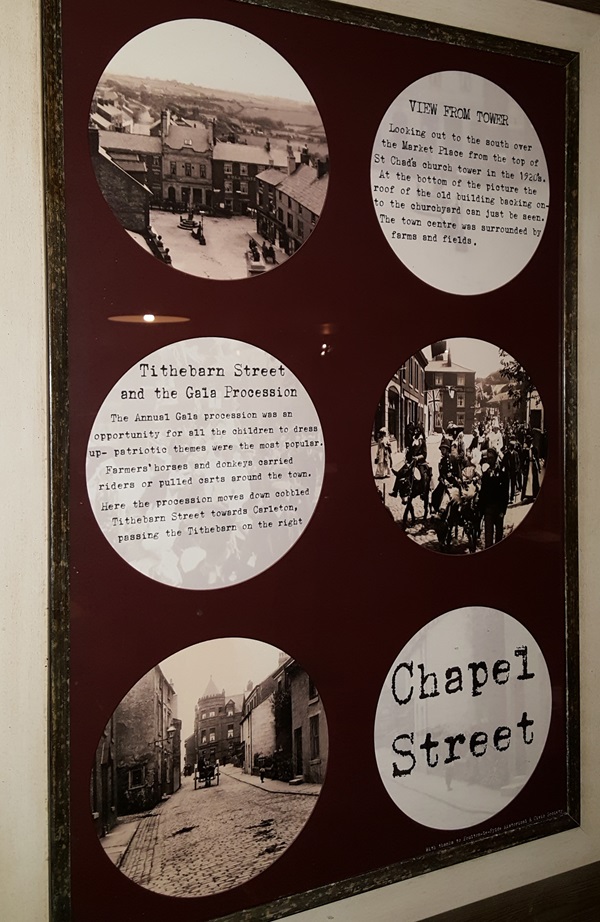
The text reads: View from tower
Looking out to the south over the Market Place from the top of St Chad’s church tower in the 1920s. At the bottom of the picture the roof of the old building backing onto the churchyard can just be seen. The town centre was surrounded by farms and fields.
Tithebarn Street and the Gala Procession
The Annual Gala procession was an opportunity for all the children to dress up – patriotic themes were the most popular.
Farmers’ horses and donkeys carried riders or pulled carts around the town.
Here the procession moves down cobbled Tithebarn towards Carleton, passing the Tithebarn on the right.
Chapel Street.
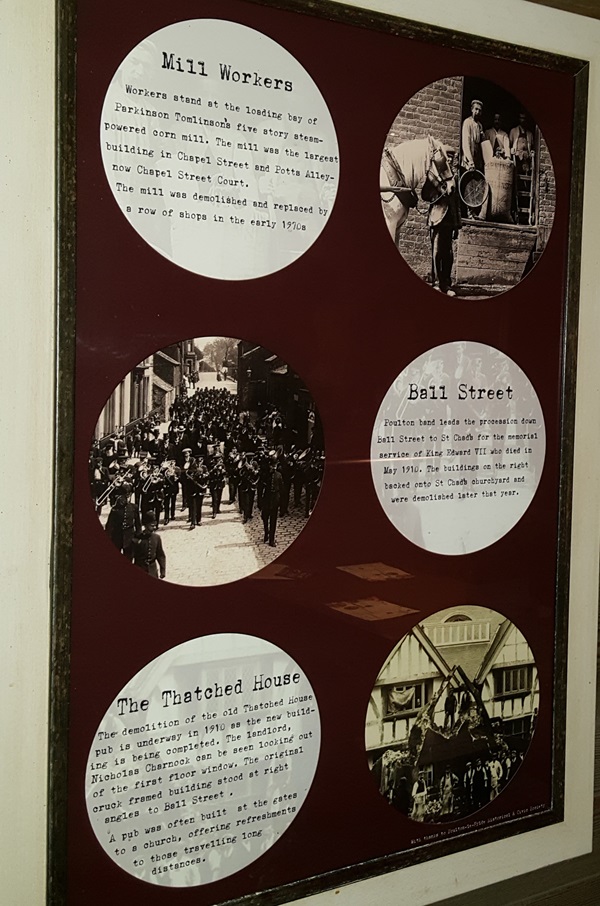
The text reads: Mill Workers
Workers stand at the loading bay of Parkinson Tomlinson’s five story steam-powered corn mill. The mill was the largest building in Chapel Street and Potts Alley – now Chapel Street Court.
The mill was demolished and replaced by a row of shops in the early 1970s.
Ball Street
Poulton band leads the procession down Ball Street to St Chad’s for the memorial service of King Edward VIII who died in May 1910. The buildings on the right backed onto St Chad’s churchyard and were demolished later that year.
The Thatched House
The demolition of the old Thatched House pub is underway in 1910 as the new building is being completed. The landlord, Nicholas Charnock can be seen looking out of the first floor window. The original cruck framed building stood at right angles to Ball Street.
A pub was often built at the gates to a church, offering refreshments to those travelling long distances.
Photographs and text showing the yeoman malster.
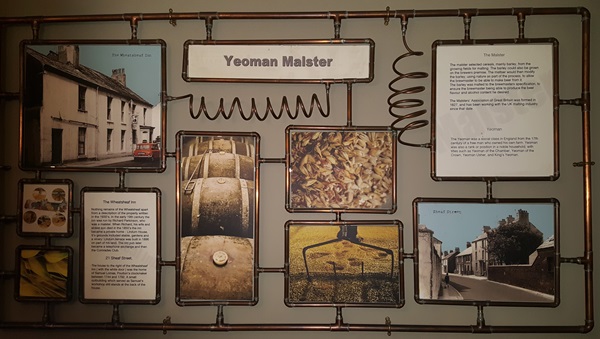
The text reads: The Malster
The malster selected cereals, mainly barley, from the growing fields for malting. The barley could also be grown on the brewer’s premise. The malster would then modify the barley, using nature as part of the process, to allow the brew master to be able to make beer from it. The barley was malted to the brew master’s specification, to ensure the brew master being able to produce the beer flavour and alcohol content he desired.
The Malsters’ Association of Great Britain was formed in 1827, and has been working with the UK malting industry since that date.
Yeoman
The Yeoman was a social class in England from the 17th century of a free man who owned his farm. Yeoman was also a rank or position in a noble household, with titles such as Yeoman of the Chamber, Yeoman of the Crown, Yeoman Usher, and King’s Yeoman.
The Wheatsheaf Inn
Nothing remains of the Wheatsheaf apart from a description of the property written in the 1930’s. In the early 19th century the inn was run by Richard Parkinson, who was a malster. When Richard, his wife and eldest son died in the 1850s the inn became a private home – Lindum House. Its grounds included stables, gardens and a vinery. Lindum Terrace was built in 1896 on part of his land. The old pub later became a telephone exchange and then the Comrades Club.
21 Sheaf Street
The house to the right of The Wheatsheaf Inn (with the white door) was the home of Samuel Lomas, Poulton’s clock-maker between 1744 and 1792. A small outbuilding which served as Samuel’s workshop still stands at the back of the house.
External photograph of the building – main entrance.
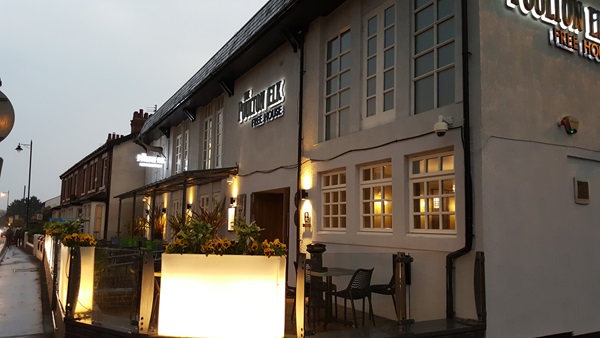
If you have information on the history of this pub, then we’d like you to share it with us. Please e-mail all information to: pubhistories@jdwetherspoon.co.uk